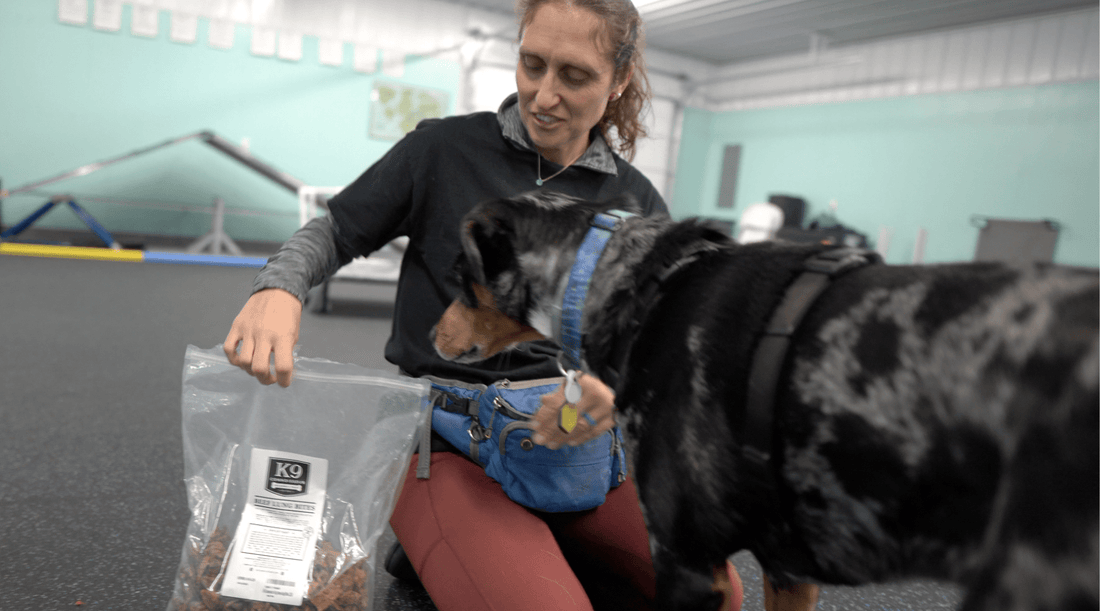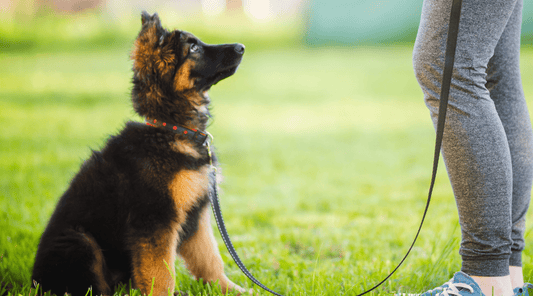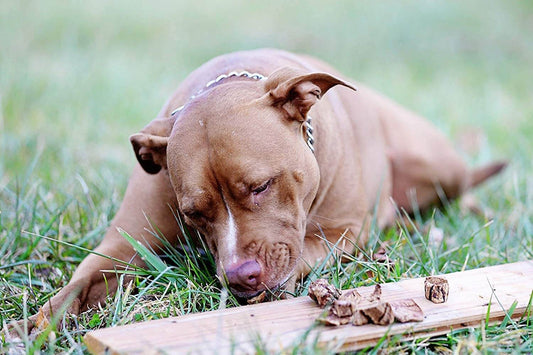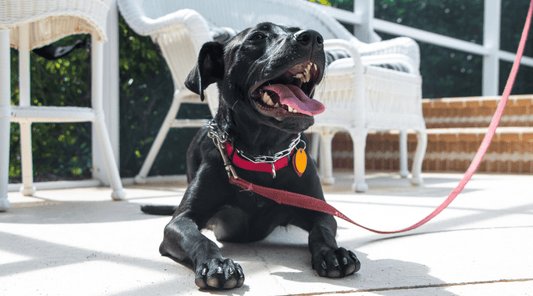
What Are the Best Dog Treats for Training?
Dawn Miller Feb 08, 20254 Minute ReadThe best dog treats for training may not come in bright-colored packages with big brand budgets behind them. They may be more discreet, American-made, healthy, and, most importantly, effective.
Last Tuesday, I was out walking my dogs Pixie and Bruno off-leash at the lake on the edge of town. I love to watch them explore the bigger world, sniff up creatures, and investigate new scents. I'm glad I can give them this kind of freedom to roam. And I especially appreciate that they always come when I call.
It wouldn't be possible if we didn't spend the time honing their recall skills with the best dog treats for training.
Why Are Treats So Important in Training?
Healthy dog treats positively reinforce a new skill. They taste great. So, dogs look forward to training.
Your dog gets a little dopamine rush that reinforces what they're learning. So, they perform the trick again and again.
Dog treats are small and easy to carry in a pouch. So, you can quickly reinforce desired behaviors.
The best dog treats are communication tools. Dogs understand they did something good when they get a treat and will keep doing it, even when they don't get a reward every time.
Irresistible treats help distractible pups stay focused on you while you teach them. That's important for hyper dogs like my terrier Pixie. When she knows I have treats, I have her complete attention—regardless of what else is happening.
Even today, while I'm letting my dogs enjoy our lake trip off-leash, I carry some treats in my pocket. If there were a bear, hunter, mean dog, or other danger in the area, I have no doubt they would come to me.
So I can keep them safe while letting them be dogs.
What Makes the Best Dog Treats for Training?
Any kibble-like treat could call itself the best dog training treat. So, I'm here to make the case for my dogs' favorite healthy dog treats.
To be indeed the best, dog treats need to check these boxes:
1. High Value Dog Treats
A high-value treat is irresistibly tasty, so the dogs can't stop thinking about it. The right treats strengthen neural pathways in the brain with positive reinforcement. These become memories, which turn into habits.
Within a short time, they can't wait to learn new skills because it means they get these delicious treats.
2. Only Healthy Dog Treats for Training; No Filler
Fillers can lead to unwanted weight gain, which could become dog obesity. Some dog treats even have added sugar with flavor and color chemicals (like Red 3, a possible carcinogen that was just banned for human food).
These ultra-processed dog treats are tasteless and nutrient-deprived because they're overcooked. Let's say "no" to that!
On the other hand, you have high value dog treats.
Ideally, high-value treats are a single ingredient, whole food with no added fillers, preservatives, GMO, or seed oils. A roasted beef marrow dog bone would fit the bill, as would any dog treat that's made straight for animal organ meat and connective tissues—with nothing added.
So, what makes these healthy dog treats for training?
Grass-fed beef bone marrow is a fantastic source of collagen protein, omega 3 (2.5X more than grain-fed cattle, conjugated linoleic acid (an immune supporting omega 6 fat), B vitamins, glucosamine, calcium, phosphorus, and zinc. The list goes on.
If you get grass-fed marrow bones, you're also getting food that's lower in saturated fat and calories overall compared to grain-fed marrow bones.
Connective tissues from grass-fed beef are mostly collagen with a lot of glucosamine and chondroitin for bone and joint health, skin, and digestive health.
For example, beef trachea tube dog treats are just a roasted cow's windpipe, with nothing added. Plus, the firm ridges make these great natural tooth brushes.
Roasted organ meats are great because they're small and perfect for a quick treat.
They don't smell like anything to me. But my terrier Pixie with her dog nose can smell roasted beef lung training treats from a mile away.
These are healthy training treats for puppies, too!
3. Small or Easy to Break Apart
When training, you'll need several small treats you can give quickly and consistently to positively reinforce the learning. Here, again my dog's like beef lung bites.
I can break one into 3 of 4 pieces. A little goes a long way. And each time I hand one over, I strengthen the new skill. I buy these in bulk!
4. Low Calorie
I will potentially need a dozen treats for one training session. So, it's important that they are nutrient-dense but also low-calorie so I don't ruin my lab mix, Bruno's dinner when dog training sessions run long
5. A Substantial Alternative
I also recommend a substantial alternative. By this, I mean a long-lasting dog bone for in-between training sessions.
Because dogs instinctually chew on things, dog bones are mentally stimulating. They can reduce anxiety, alleviate boredom, and make your pup more focused and easier to train.
Tips for Using Treats Effectively
Getting my dogs to the point that I could let them roam in a wooded area around a lake required patience. And I have some tips to make the process easier.
1. Pair Treats with Other Cues
Depending on what you're training, these could be verbal praise, hand signals, belly rubs, or the "command word".
2. Be Consistent
Whatever you decide to do, just pick a lane and be consistent until they know the trick. Your dog needs to see the same scenario play out again and again, to "get it". But they will.
3. Realize It Gets Easier the More Skills They Learn
Learning to sit may not seem glamorous. But once you teach a dog the basics, they're in it to win it. You can build on their knowledge and advance to more complex skills.
4. End on a High Note
Never walk away from a training session upset. Your dog won't want to work with you next time. Instead, do this.
If they're struggling with a new trick, go back to something they do without fail, like "sit". Then, praise them and give them a high-value treat.
End the session there. They'll remember how happy you were at the end of the last session and want to try again soon.
5. Gradually Wean Off Treats
The goal is only to need treats when teaching new tricks—and to reinforce the basics occasionally. This helps you avoid overfeeding while taking dog training to extraordinary heights.
My friends and neighbors are amazed at some of the tricks I've taught Pixie. From fun games to feats of bravery, she loves to impress people at parties, cookouts, and the dog park.
A well-trained dog is a happier dog. They want to please us and live in harmony in our homes. Training with the best treats is how I trained my rescue dogs so quickly.
To learn more about positive reinforcement training with videos and step-by-step instructions, I encourage you to check out this Free 7-Day Dog Training Challenge from the best single-ingredient, USA-based dog treat vendor I know, K9 Connoisseur.
Available On:





